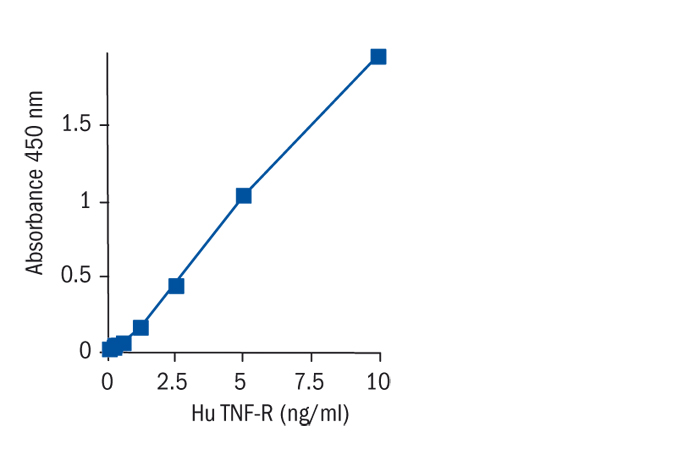Type
Sandwich ELISA, HRP-labelled antibody
Applications
Serum, Urine, Plasma, Cell culture supernatant
Sample Requirements
10 µl/well
Shipping
At ambient temperature. Upon receipt, store the product at the temperature recommended below.
Storage/Expiration
Store the kit at 2–8°C. Store lyophilized controls at -20°C. Under these conditions, the kit is stable until the expiration date (see label on the box).
Calibration Curve
Calibration Range
0.16–10 ng/ml
Limit of Detection
0.10 ng/ml
Intra-assay (Within-Run)
CV = 1.4%
Inter-assay (Run-to-Run)
CV = 2.0%
Spiking Recovery
94,00%
Dilution Linearity
93.5 %
Research topic
Cytokines and chemokines and related molecules
Summary
Tumor Necrosis Factor (TNF) was originally discovered in sera of animals and was found to cause hemorrhagic necrosis of some transplantable mouse and human tumors and to exhibit primarily cytotoxic activities against tumor but not normal cells in vitro. The TNF family consists of two proteins designated TNFα, also called cachectin, and TNFβ, also called lymphotoxin, which are pleiotropic cytokines that can mediate a wide variety of biological effects.
Instructions for Use (RUO)
Instructions for Use (RUO)
Safety Information (RUO)
MSDS (RUO)
Find documents for the lot

